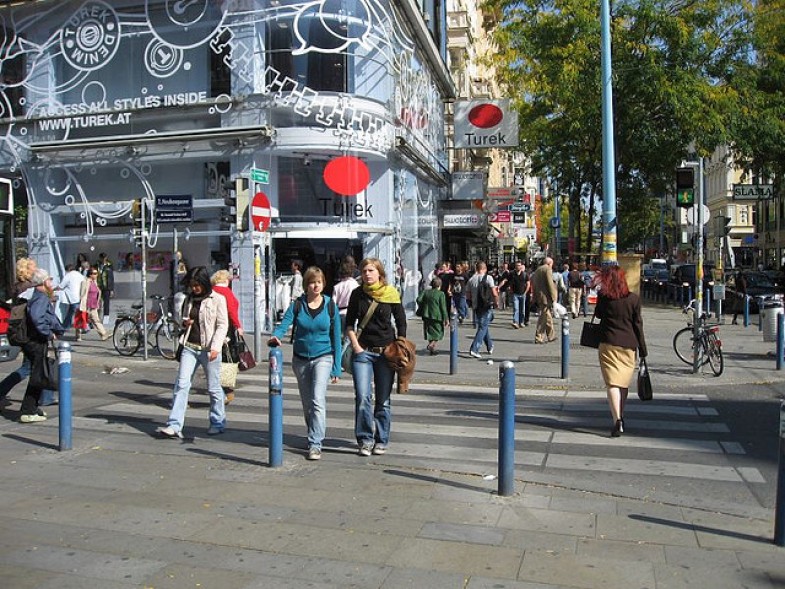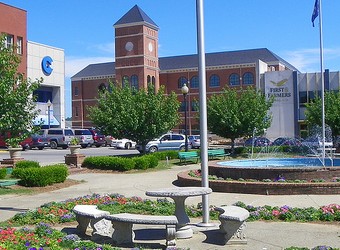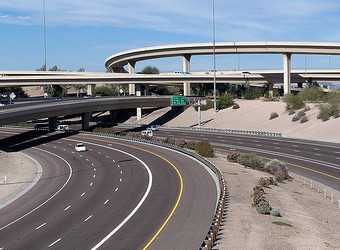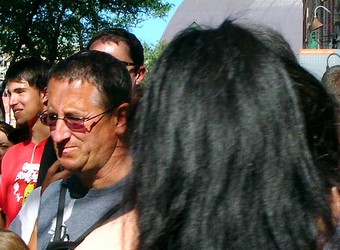Once in a while you come across some juicy tidbit of information that gloriously confirms something you always suspected was true. That happened to me a while back when reading William Murray’s book A Walk in Rome — a collection of musings, memories and historical research from _The New Yorker_’s longtime Italy correspondent.
Murray (whose obituary I discovered in The New York Times only an hour after finishing the book) notes that Italian dictator Benito Mussolini was so deeply troubled by the chaos of people walking about central Rome that he enacted strict rules governing pedestrians. Everyone on the busy thoroughfare Via del Corso was commanded to walk in one direction on the east side of the street, and the opposite direction on the west side. This crude attempt at social engineering was, of course, a spectacular failure, and it provides an uplifting example of people beating back an attempt to limit their access to the commons.
A wide smile crossed my face as I read this little story, since it substantiates my longstanding claim that authorities who want to corral and order pedestrians for the convenience of motorists really do exhibit fascistic tendencies. I have often joshingly used that F-word to describe politicians and traffic engineers who impose impediments to the free flow of foot traffic. Now I have the historical record to back me up.
Sidewalks and streets are the frontlines of the commons. They are the place where we most often bump into one another — figuratively as well as literally. The social vitality of any community can be measured by how many people are out on the streets. It’s where old friends reconnect with a joyous hug, where love affairs begin with a mutual glance, where you can watch the parade of life pass by.
Modern societies, where the streets are dominated by cars and sidewalks are gone from many new developments, suffer greatly from the gradual, subtle elimination of this critical public space. Through the vast majority of human history, the streets belonged to everyone. It’s where people stopped to talk, where dogs slept, where children played. I remember long afternoons of baseball played in the street when I was a kid, with only occasional interruptions by some driver—who we would all curse under our breath. The street belonged to us. And this was not some bucolic refuge or distant era, but only 40 years ago in a medium-size Midwestern city.
Cars have swiftly and forcefully taken the streets away from us with the strategic help of the traffic engineering profession, who for decades saw human beings not seated in cars as a dangerous impediment to the smooth flow of traffic and, perhaps, a threat to the social order. It’s not uncommon for pedestrians strolling through upscale suburbs to be questioned by the police, who might view them as suspicious characters or as someone likely needing help.
Nearly all the street design decisions made in every American and Canadian city since the 1920s has been for the benefit of motorists and the detriment of people on foot. Safety was the excuse, but an encroachment of the commons the outcome. Some places now see this as a problem and are working to improve pedestrian amenities through traffic calming and other enlightened measures. But other cities are expanding the campaign to restrict pedestrian movement to the sidewalk itself.
I am often disappointed at how many North Americans willingly submit to this sort of auto-cratic injustice. Romans living under the bootheel of Mussolini’s fascist regime refused to accept this infringement of their right to walk the way they want to walk (to quote a famous grandson of Italy, Bruce Springsteen). So why has no one in Winnipeg, a city famous for its radical history, torn out the sidewalk blockades preventing people from crossing at the corner of Portage and Main, the most legendary intersections in all of Canada? Why don’t folks in Seattle, a hotbed of enlightened civic activism, openly defy the police department’s longstanding policy of issuing jaywalking tickets to innocent souls simply crossing the street? And why for crying out loud didn’t more New Yorkers, (America’s closest counterpart to the colorfully anarchic Romans) resist Mayor Rudy Giuliani’s campaign to confine pedestrian movement in order to promote more cars in an already traffic-choked city?
It’s high time that we stand up to planners and politicians who don’t yet understand that it’s pedestrians that bring life to a community, and it’s cars who suck all the life out. The streets are common property, belonging to all of us not just those behind the wheel. While it’s important to lobby public officials for traffic calming and other public safety improvements, it’s also important to assert the fact that our streets don’t exist merely for the ease of motorists. Improving the life of your community and defending the commons means takin’ it to the streets.






